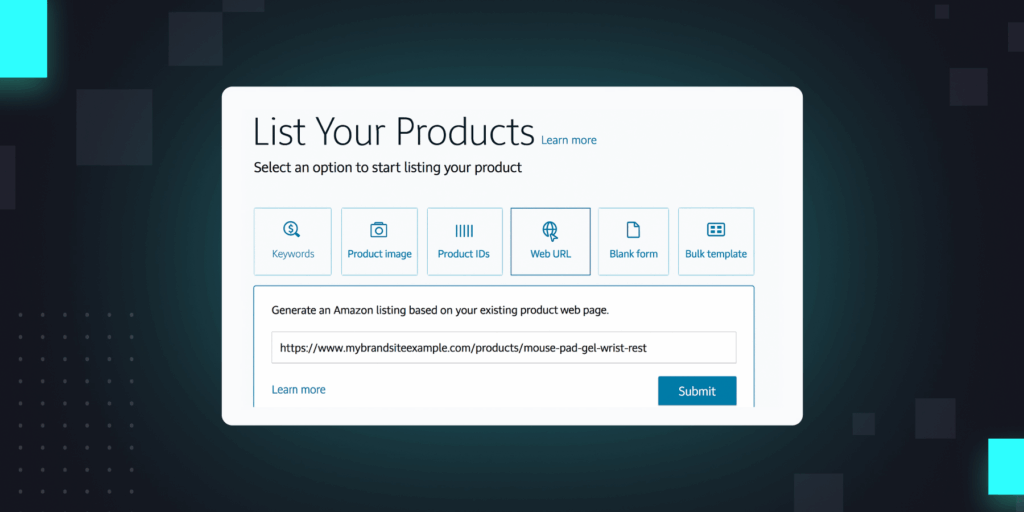More than ever before, brands and agencies are eagerly trying to pull insights out of their Amazon data. If you’re not utilizing all this data, you’re missing out, because all your competitors are.
But it doesn’t take long for many brands and agencies to run up against a common roadblock. When you first pull your data, either from manual downloads or from an API, it isn’t easy to decipher. Your data needs a lot more work before it’s in a format that is conducive to deeper analytics
What’s going on here? Many brands and agencies are skipping the critical step in any worthwhile data strategy. Namely: You need to build a plan for data enrichment.
Wait, enrichment? Think of enrichments as ways to accelerate your analysis. It’s the process of reorganizing and adding to your data to make it more useful for your unique business needs.
With enriched data, you’ll spend much less time trying to uncover insights from your data and much more time acting on those insights.
But if you don’t have a strategy to enrich that data, you are condemning yourself to hours and hours wasted trying to 1) segment your data, 2) tie it to multiple sides of your business, and 3) apply currency conversions.
Here’s how you can get started building your own data enrichment strategy.
The #1 enrichment tactic: Intertwine your data
Most sophisticated brands or agencies know their ads data and their retail data (such as inventory, organic sales, etc) are deeply intertwined.
The problem: Amazon reports ads and retail data separately. That means, for as many reports as you download from your ad accounts and from your Seller Central / Vendor Central accounts, they won’t show you the whole picture if they aren’t combined.
That leads us to the most important piece of the enrichment process: Build the full picture with your data.
Let’s take organic sales as an example. A central feature of Amazon is its flywheel effect. As your ads drive sales, your product should, in turn, climb up the organic ranks in Amazon search results. That improved organic position = increased organic sales.
To assess the overall success of an ad campaign, then, you should assess not just the ACOS (Advertising Cost of Sales) but the TACOS (Total Advertising Cost of Sales). Unlike ACOS, TACOS also includes information about the organic sales you are driving.
It’s a fuller way to evaluate ad performance. But you can’t unlock TACOS metrics without intertwining your ads and retail data.
Or look at inventory. Your inventory levels should influence the amount you spend on advertising. If your inventory is low, for instance, you want to quickly adjust or pause the corresponding ad campaigns on that product.
When your retail data isn’t connected to your ads data, these simple steps are a pain to execute.
These are all basic examples to illustrate our point. Ideally, crafting a strategy for data enrichment means tying together not just retail and ads metrics, but also information about coupons and other discounts, product prices, Cost of Goods Sold (COGS), products shipped vs. products sold, and much more.
You also need to consider how you’re enriching data across marketplaces. How difficult is it to see your Walmart performance and Amazon performance in the same view? Your performance on both channels is likely interrelated, so you want to see both at the same time.
Really, data enrichment is the core functionality behind Intentwise Analytics Cloud. We wanted to create a way for agencies and brands to get more out of their data, and visualize all of these fragmented data sources in one unified data store.
What are other data enrichment ideas?
Brand segmentation. Let’s say you are analyzing your ad performance across a number of keywords. Inevitably, your branded keywords are going to have a much higher ROAS than your non-branded ones.
If you pool together your branded and non-branded keywords in your analysis, you won’t have a great sense of how well your ads targeting new customers are doing. If your non-branded keywords are converting poorly, for instance, that might be masked by the strong performance of your branded keywords.
Segmenting out branded vs. non-branded keywords gives you a much clearer view of what’s going on.
Sub-brand mapping. Segmenting out branded vs. non-branded keywords is not the end of the story. What if you manage multiple brands under a single advertising account? To make your data usable, you’re probably going to want to segment out performance by sub-brand.
Let’s say you’re a cookware company that sells a line of kitchen knife products as well as a line of saucepans. These two brands might perform very differently on Amazon.
If you don’t analyze your performance by sub-brand, you won’t know, for instance, that your kitchen knife brand is seeing high ROAS while your saucepan brand… isn’t.
Most agencies and brands manage their sub-brands by maintaining a mapping of ad campaigns to sub-brands across a series of spreadsheets.
That method works, but it can get painful quickly–and is prone to human error. Intentwise recently rolled out a better way: When you use our new Sub-Brands tool in Intentwise Analytics Cloud, we can break out—and roll up—ad performance automatically at the sub-brand level you define.
Currency conversions. Amazon reports sales and ad spend in local currencies. When you just pipe in data directly from Amazon, that means you’re going to be seeing revenue numbers in dollars, euros, pesos, yen, and potentially dozens of other currencies.
Want to quickly figure out how much revenue you generated? Either you need to have a computer for a brain, or, more likely, you’re going to have to convert all of them to the same currency.
Currency conversions are a pain, especially because exchange rates fluctuate constantly. A good currency converter will be automatic, and will shift with the exchange rate itself.
Data enrichment is the ultimate time saver
Crafting a plan for data enrichment might sound like a lot of work, but trust us, you’ll want to do it now. With the right internal systems, or the right external partner, you can ensure enrichment happens automatically.
Need to figure out which enrichments are worth the effort? You should start by asking yourself: What are the unique questions my business needs to answer? Knowing what questions you want to solve will guide you toward deciding which enrichments are worth it.
All it takes is a little bit of foresight.
(Want more content like this? Be sure to subscribe to our newsletter.)







